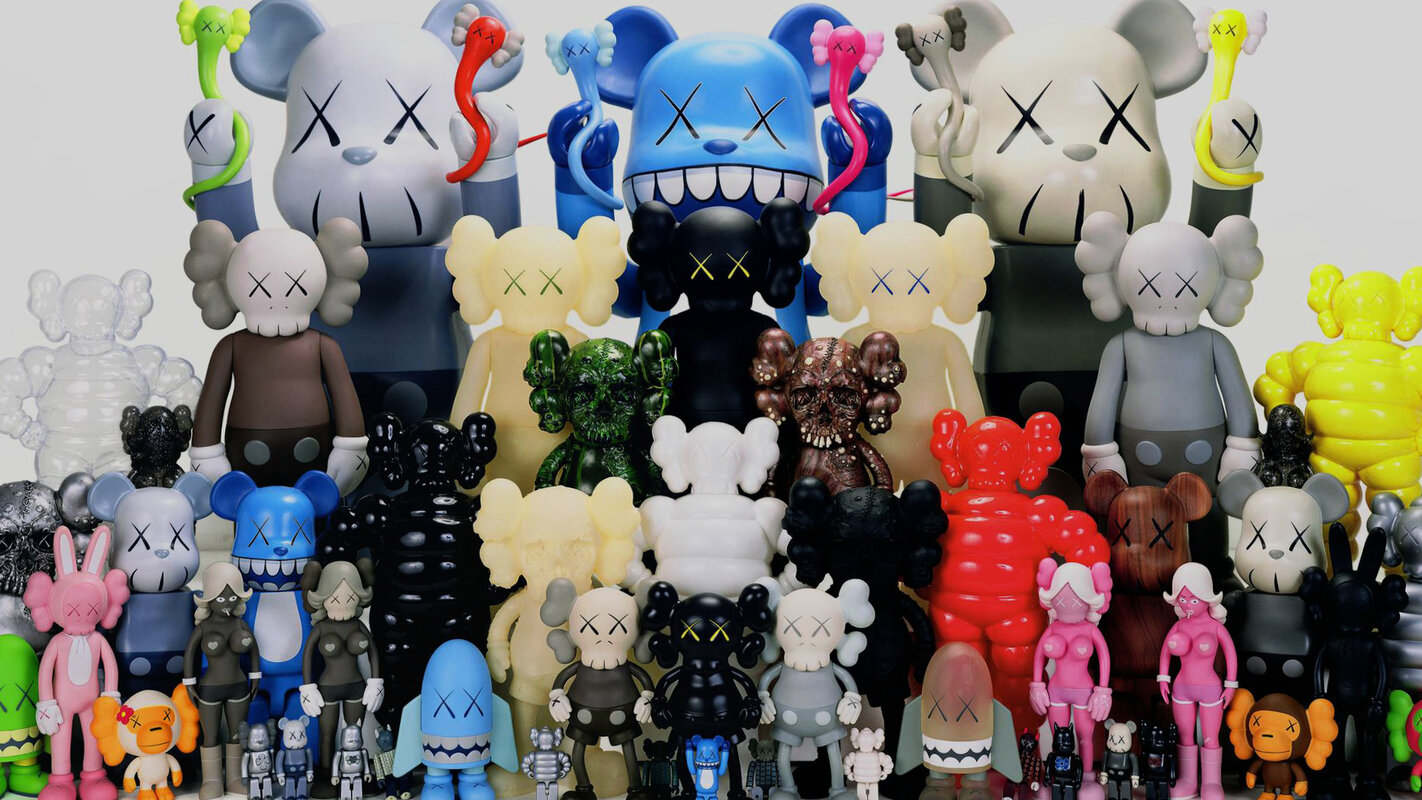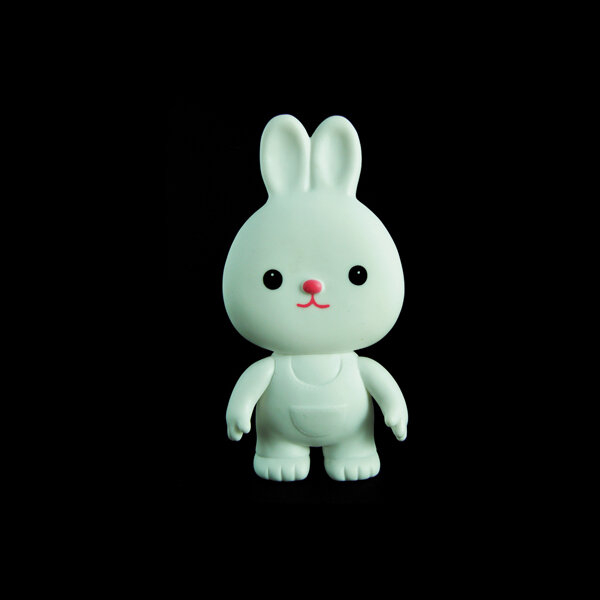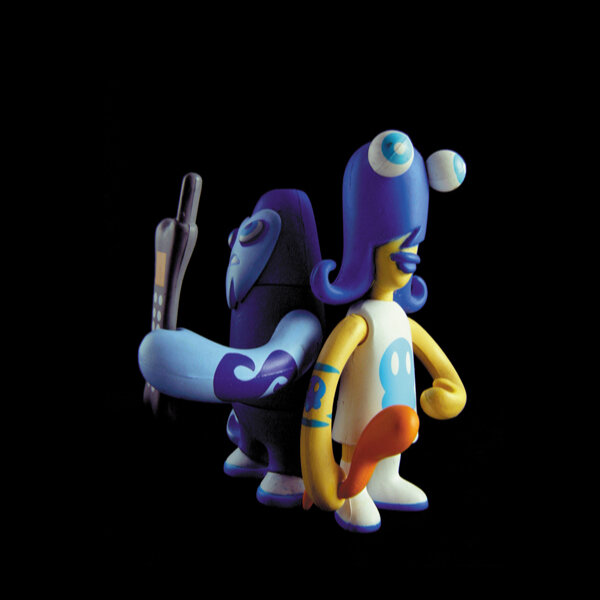
Woodrow Phoenix: CORPOREALITY
Woodrow Phoenix is a London-based comics artist, writer, editorial illustrator, graphic designer, font designer and author of children’s books. In his book, Plastic Culture: How Japanese Toys Conquered the World (Kodansha, 2006), he interviewed artists and designers in Japan and China for a critical appraisal of the world of art toys. For Pictoplasma he remembers how the Designer Toy movement started off, and how it turned into a global art movement…
The fascinating thing about the birth of the designer toy in the mid-1990s is how it seems to have been arrived at by artists and manufacturers working almost simultaneously from opposite directions. While Asian artists turned art into commercial product, toy manufacturers attempted to make commercial products with the status of art. Perhaps this is no surprise because they are both the inevitable consequence of the same idea. Everyone born after 1960 has grown up in a world of totems and symbolic characters, selling us things, identifying services and representing commercial concepts. Mascots are a banal fact of modern life. Even though they seem hopelessly naive and unsophisticated for contemporary approaches to branding, their emotional appeal is what makes them work for food service and event promotion, from exhibitions, trade fairs and conventions to the local, national and international arenas of organized sport. These products are so similar that logos are not different enough; more ‘personality’ is required. A memorable animal or cartoon ‘spokesperson’ is an excellent way to help differentiate amongst the huge number of similar product lines in the average supermarket. Football, baseball, basketball and hockey leagues around the globe have a plethora of ‘official’ cartoon animals, teddy bears or anthropomorphic sports equipment representing their teams.

Familiar as we are with mascots and how they work, it took artists to understand what could be done with the idea that a mascot could become unlinked from the function of selling and represent nothing more than itself. A mascot without a product is like a predicate without a subject. A mascot must sell something, otherwise what is its purpose? The brilliance of a mascot without a product is that the viewer/reader/consumer attracted by the surface qualities of a figure will attach their own significance to it. They can discover their own message encoded in its outlines, a personal response that is all the more special for being evoked without a sales pitch.
Sanrio accidentally made this discovery in a small way with Hello Kitty and extended this realization into an immensely successful branding strategy. Hello Kitty sends forth only one message (literally, ‘Hello’), but it is received and interpreted in a myriad number of ways by those who respond to her.
A new generation no longer believes it has to sublimate emotional responses in order to be ‘adult’. We are redefining what an adult is for ourselves. To be a whole person at all times and not just when your boss isn’t looking, reclaiming the right to feel, to be freely expressive in a way adults were supposed to leave behind. The old markers between youth and adulthood were built on rules that no longer make sense. Adults used to prove their maturity by denying their impulses and hiding the quirks that made them individuals. The better you were at shutting off all playful, emotional, arbitrary behaviour, the more successfully mature you were. But denying your capacity for play does not prove you are grown up. It makes you less of a person. This is ideal, of course, for a cog in in a rigid, rule-based work machine, a world of bosses and subordinates, companies that tell you how to dress, what to say, how to behave. But for many people there is no longer a ladder to ascend, no need to monitor yourself at all times for potential slips that will ruin your chances of succeeding in the corporate world. Dress codes are meaningless. You can’t tell who is most powerful or most successful from the clothes they wear or the way they choose to live. Everyone aspires not to be the boss but to be their own boss instead. In directing their own lives they are alert to things that help to support their attitudes, personal totems that display the kind of person they are and what they believe in. Characters now perform for individuals much the same function as they traditionally did as mascots for brands and products.

The powerful attraction of a 2-D image made into 3-D, which brings the graphic perfection of its flat paper world into our dimensional space where we can touch and manipulate it, comes from the way it changes our world, transforms our space into a realm where unreal things become real, where the products of imagination are as solid as the people attracted to them. When something formerly only conceptual becomes material, the border between possible and impossible things breaks down.
In their simplified iconic fashion, the emotions that these characters represent are magnified: clear and unambiguous in a way human emotions rarely are. This directness is what makes a mascot work. Visually embodying an abstract idea, their complete, perfect – and perfected – surface form is an invitation to approach, to be directed, to feel the idea they are projecting, to recognize it inside yourself and bring it forth. The figure can be the catalyst or guide for our journey to a less embarrassed, less self-censoring state.
Only artists like Takashi Murakami who themselves love the qualities of toys could have made this conceptual leap. ‘Products that Kaikai Kiki manufactures are smaller-scale, mass-distributable artworks. I have been inspired by the way Japanese creativity has been influenced and formed. I am inspired by my observations, and make work that responds to that inspiration. Sometimes I feel like my work is an extension of popular culture. I think that as an artist, there is usually an element of examination. I enjoy connecting this fantasy culture to more “real” discourses, such as history and art. This is also why I have tried to introduce Japanese pop culture to the world. Because it has many connections to concerns of undeniable relevancy.’
His many imitators fail because they do not understand the deeper motivations. This kind of thinking is not marketing-led or focus-group-tested. The corrosive powers of cynicism and hype fail to create characters with the right kind of purity. Makers have to be passionate. Unironic. Obsessed. From those obsessions, there emerge unpredictable, surprising, engaging characters. When Yasutaka Minegishi collaborated with Archer Prewitt to produce the seminal Sof’Boy vinyl figure in 1999, it was the culmination of a lifetime’s devotion to US pop culture, indie music and comics, in a way that made perfect sense to him: as celebration, as tribute, and with a piece that would be his own contribution to the history of Toyland. For Junko Mizuno, the style of figure introduced in 2000 with her Mizonotic Fantasy dolls was an original mixture of her preoccupation with fairy stories, 1970s neo-Victoriana like Strawberry Shortcake and classic girls’ manga mixed with a darkly sexual cyberpunk undercurrent. It was such a perfect expression of the zeitgeist that a flood of hundreds of similar figures has made her the reluctant queen of an alternaculture cliché army.

Pete Fowler made the inevitable trip from London to Tokyo to facilitate the making of his World of Monsterism series by Cube Works in 2002. The mini figures were built on a modular system; body parts in two different colour variants could be swapped between characters for a huge variety of possible custom creatures. His colourfully goofy style remains distinctive as he continues to riff on the idea of variation and recombination.
Even though vinyl figures can be produced in extremely low numbers, there remains the perception that their flawless industrial surface means that they must be generic, part of an army of thousands. These ideas have now become commonplace and boutique toy production has become an industry, but this is what made soft vinyl figures so astonishing in the early days of designer toys: the expensive commercial weight of an assembly line brought to bear on a figure that was not ‘official’, did not belong in a factory and did not have an advertising campaign behind it. The contradictions that arose from the industrial sheen given to a ‘home-made’ concept that often questioned or subverted the concept of what a mass-produced product should be made them a truly radical novelty.
The shock of the perfect soft vinyl boutique toy has given way to the wonky, funky, tactility of plush. Plush toys are the ultimate obsessive work, hand-made partly because creators cannot afford vinyl, yet their fabric and stuffing has an immediacy that vinyl lacks. For those who desire some kind of personal contact with the creator, they will find it in every slightly different stitch. Of course, it is easy to produce ‘hand-made’ figures in industrial quantities, but somehow this is beside the point. The popularity of hand-made toys goes beyond economics. And now, as the intimacy of the small figure becomes the spectacular iconic presence of the giant, it also goes beyond size. The birth of a new kind of mascot, perhaps? …

Originally published in Prepare for Pictopia, 2009
- 34 views
- 0x empathizes